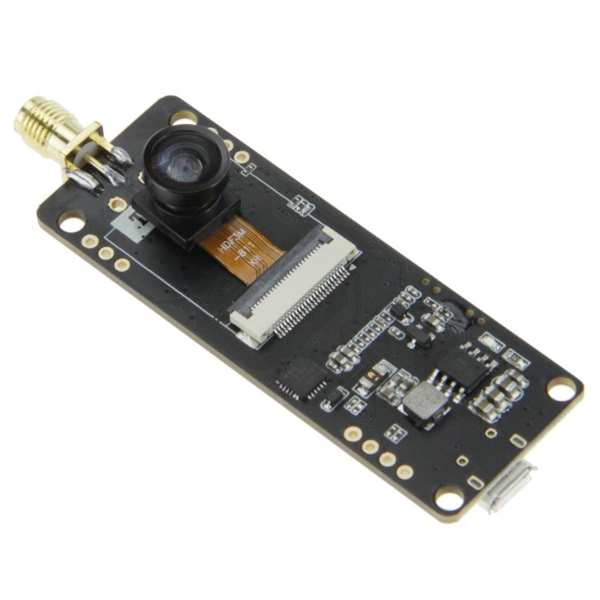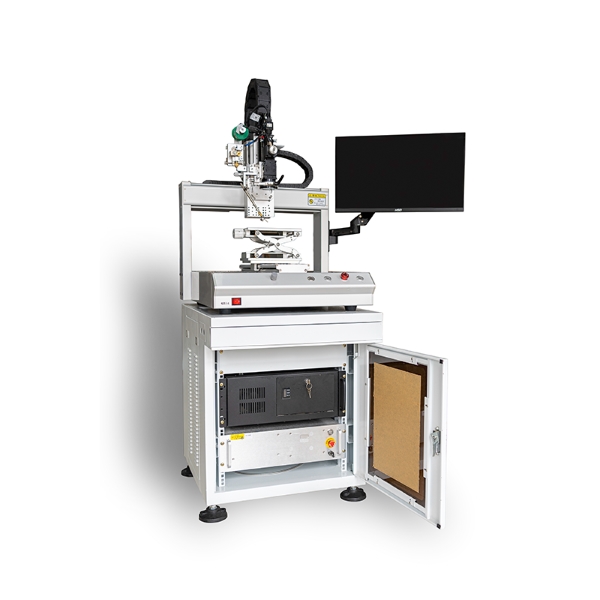Application of Laser Soldering Technology in Camera Modules
The application of laser soldering technology in camera modules is demonstrated in its ability to meet the miniaturization and precision requirement of electronic devices. Camera modules contain various micro-components, including image sensors, lens assemblies, and circuit boards. The connections between these components demand exceptionally high stability in electrical performance and structural strength.

Camera Module Appearance Diagram
In practical applications, laser soldering technology is not only used for welding camera modules but also widely employed in various electronic assembly field, such as smartphone cameras, automotive electronics, current sensors, and the photovoltaic new energy sector. The advantages of this technology lie in its ability to provide higher soldering precision and efficiency while minimizing thermal impact on the product itself, thereby preserving the integrity and functionality of electronic components. Its key benefits include:
High Precision: Traditional soldering techniques struggle to achieve the required accuracy for micro-spaced solder joints, whereas laser soldering enables micron-level precision control, making it suitable for extremely fine-pitch solder joints and meeting the demands of precision components within camera modules.
Non-Contact Soldering: Laser soldering is a non-contact process that avoids thermal damage to surrounding sensitive components, reducing the heat-affected zone. This is particularly critical for highly integrated and compact camera modules.
Stable Soldering Quality: Laser soldering ensures consistent energy distribution, guaranteeing uniformity and reliability in each soldering operation, which enhances overall product quality and long-term stability.
High Adaptability: Laser soldering can handle workpieces with complex surfaces and is less likely to interfere with components on the workpiece, including different metals and their alloys. This makes it suitable for diverse material combinations in camera modules.
High Automation: Integrated with CCD vision positioning systems, laser soldering machines can automatically recognize and precisely locate soldering points, significantly improving production efficiency and soldering accuracy while reducing human errors—ideal for mass production.
Rapid Heating: Laser soldering utilizes high-energy-density laser beams to generate instant high temperatures, quickly melting pre-placed solder and completing the soldering process at high speed.
Low Consumable Costs: Since no soldering iron tip is used, laser soldering eliminates tip wear, thereby reducing production costs.
Specific Applications of Laser Soldering:
• Precision Component Soldering: For example, securing image sensors to substrates or bonding fine connecting wires to circuit boards, laser soldering provides a reliable soldering solution.
• FPC (Flexible Printed Circuit) Connections: Commonly used in camera modules, FPCs are thin and flexible. Laser soldering prevents thermal stress damage, ensuring reliable connections.
• Lens Assembly Fixation: Even tiny lens components require precise fixation. Laser soldering guarantees accurate positioning without compromising optical performance.
Laser soldering plays a crucial role in camera module manufacturing. It not only enhances production efficiency and product quality but also drives the development of camera modules toward higher integration and more compact designs.

Illustration of Songsheng Optoelectronics Laser Constant-Temperature Soldering System
Features of Songsheng Optoelectronics Laser Constant-Temperature Soldering System:
— High laser processing precision, with a minimum spot diameter of 0.1mm, enabling soldering of micro-pitch mounted components and chip parts.
— Localized short-duration heating minimizes thermal impact on the substrate and surrounding components. Different heating parameters can be applied based on component lead types to achieve consistent soldering quality.
— PID real-time temperature regulation and feedback system ensures constant-temperature soldering, guaranteeing high yield and precision.
— Exceptional laser processing accuracy, with laser spots reaching micron-level precision. Program-controlled processing time and power significantly outperform traditional soldering irons. Capable of soldering in spaces under 1mm.
— Multi-optical-path coaxial design with CCD positioning provides a "what you see is what you get" experience, eliminating the need for repeated visual alignment corrections.
— Non-contact processing avoids stress caused by contact soldering and eliminates static electricity risks.
— Laser as a green energy source offers the cleanest processing method, with no consumables, simple maintenance, and user-friendly operation.
— No solder joint cracks when performing lead-free soldering.
Contact: Mr.Xiao
Phone: +86-13385280662
E-mail: market001@whlaser.cn
Add: Room 02, Floor 5, Building 9, Gezhouba Sun City, No. 40, Gaoxin 4th Road, Donghu New Technology Development Zone, Wuhan